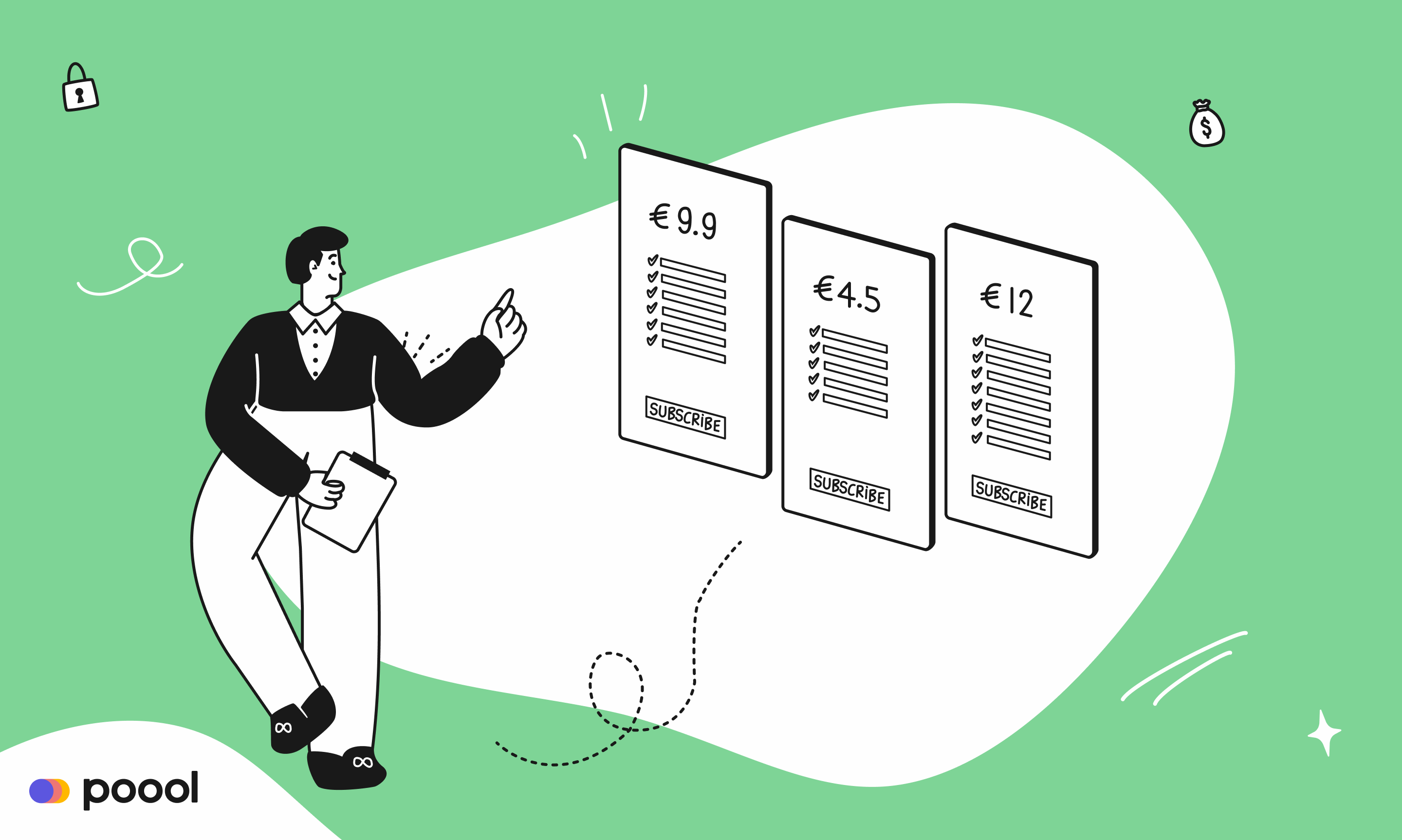This series looks at the paywalls employed by a variety of online content producers. The user journey, the amount of information required from the user, the payment methods offered and the ease of unsubscribing. These are all key to ensuring the success of a paywall, hence why we created this series and are analyzing the conversion funnels of these publishers.
Remember, however, that your most valuable tool to persuading a reader to take out their credit card and subscribe is your value proposition and content.
We'll cover:
- The Financial Times Paywall
- The Washington Post Paywall
- The New York Times Paywall
- Quartz Paywall
- Wired Paywall
- The Athletic Paywall
- Netflix Paywall (VOD)
- Canal+ Paywall (VOD)
- Audible Paywall (audio)
Interested in implementing a paywall and subscription strategy with the same success as these publishers? Poool have a simple, flexible platform to allow you to do exactly this, and without the need for tech support at every turn!
Book a demoToday: The Washington Post!
What's needed for a user to subscribe to The Washington Post?
- 6 clicks are needed to subscribe and return to content
- 1 scroll is required
- 2 fields need to be filled in
- 3 payment methods are available (credit card, Paypal, Amazon Pay).
So, step by step.
Step 1: The reader wishes to access the second article but is stopped by a paywall requiring subscription.
A user can only see the title and image of the article that they want to read (they are unable to scroll down). The entire paywall is visible and offers only one option:
- A trial costing 1$ that can be cancelled any time
Step 2: The reader can now choose between two offers
- All-Access Digital (6$ every 4 week)
- Premium EU Ad-free (9$ every 4 week)
Note that this second option means that this wall can be described as a cookie-wall because it offers an alternative for users who don't want to accept cookies and tracking. This is a more expensive option, which is expected as the user has to make up for lost ad-revenue. For more information about cookie walls, we have a dedicated article outlining what a cookie wall is, providing examples and explaining how it benefits publishers.
We opted for the “All Access digital” offer.
Step 3 : Payment form
We are redirected towards a payment page where a single scroll is needed to see the whole form. Here, the user simply needs to provide their email address.
The form falls into 4 parts: confirming their offer choice, contact details, bank details (if paying by card) and payment method (if paying with Paypal or Amazonpay).
3 payment methods are available for us:
- Credit card (most highlighted payment method on the website)
- Paypal
- AmazonPay
Step 4: Payment validation and order confirmation
We finished the payment and got a subscription confirmation.
At this point we are asked to create an 8-character password. Creating a password after the payment simplifies the purchasing journey for the user.
The payment is now validated. We are sent a purchase recap and afterwards are redirected, for the second time, to an order summary stating our username (our email address) ready to sign-in in the future.
Step 5 – Reading the article
When clicking on "start reading", we weren’t redirected to the article that we started on but to the home page.
1 click later, we found the article we were trying to read. It would perhaps be better if we could have been sent straight to this article.
That’s it, we’ve subscribed to The Washington Post and were able to read our article!
To sum it up, here are the steps needed to subscribe:
- 6 clicks are needed to subscribe and return to content
- 1 scroll is required
- 2 fields need to be filled out
- 3 payment methods are available (credit card, Paypal, Amazon Pay)
What about mobile devices?
The same subscription journey, same number of clicks and same options.
Interested in integrating Poool's Paywall into your site? Our Paywall platform allows you to segment audiences, block content differently depending on the user's context, A/B test journeys, analyze and optimize, all within our Dashboard!
